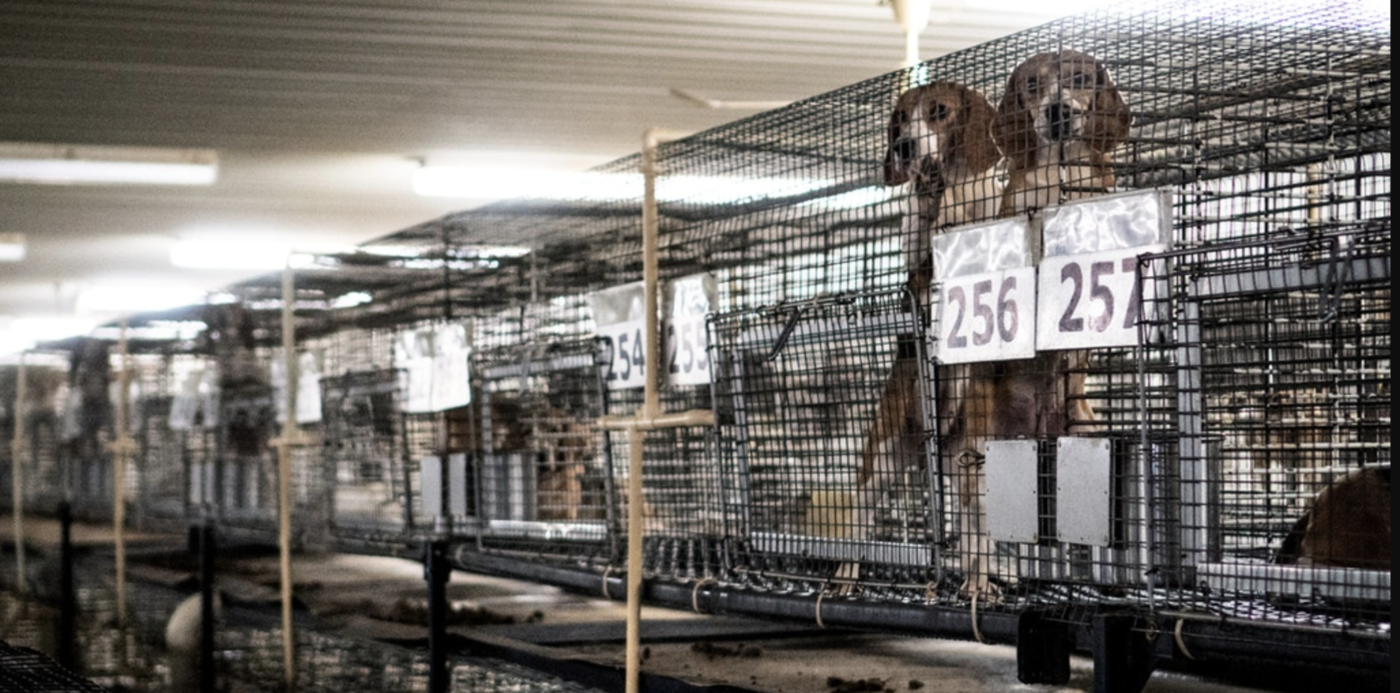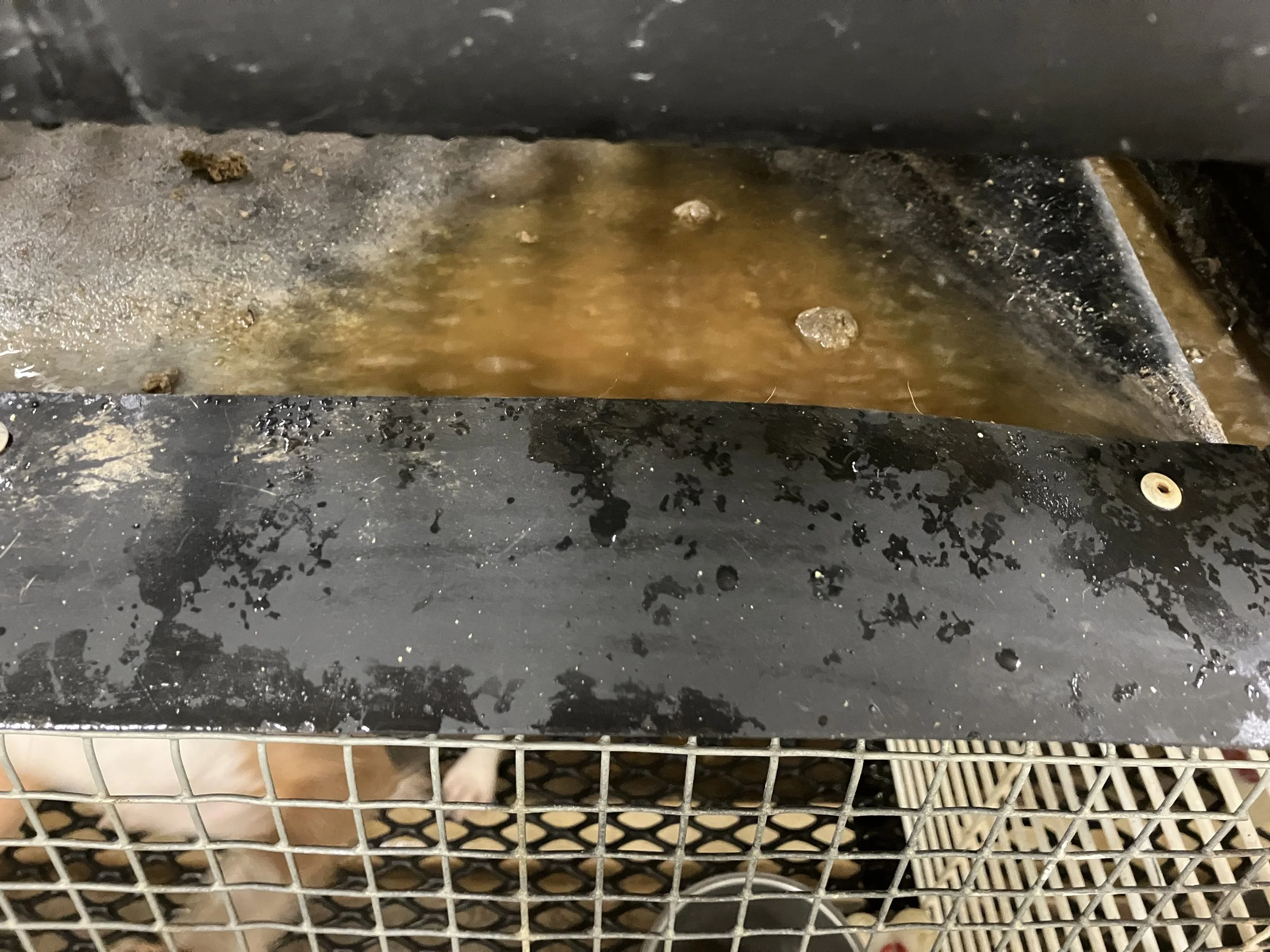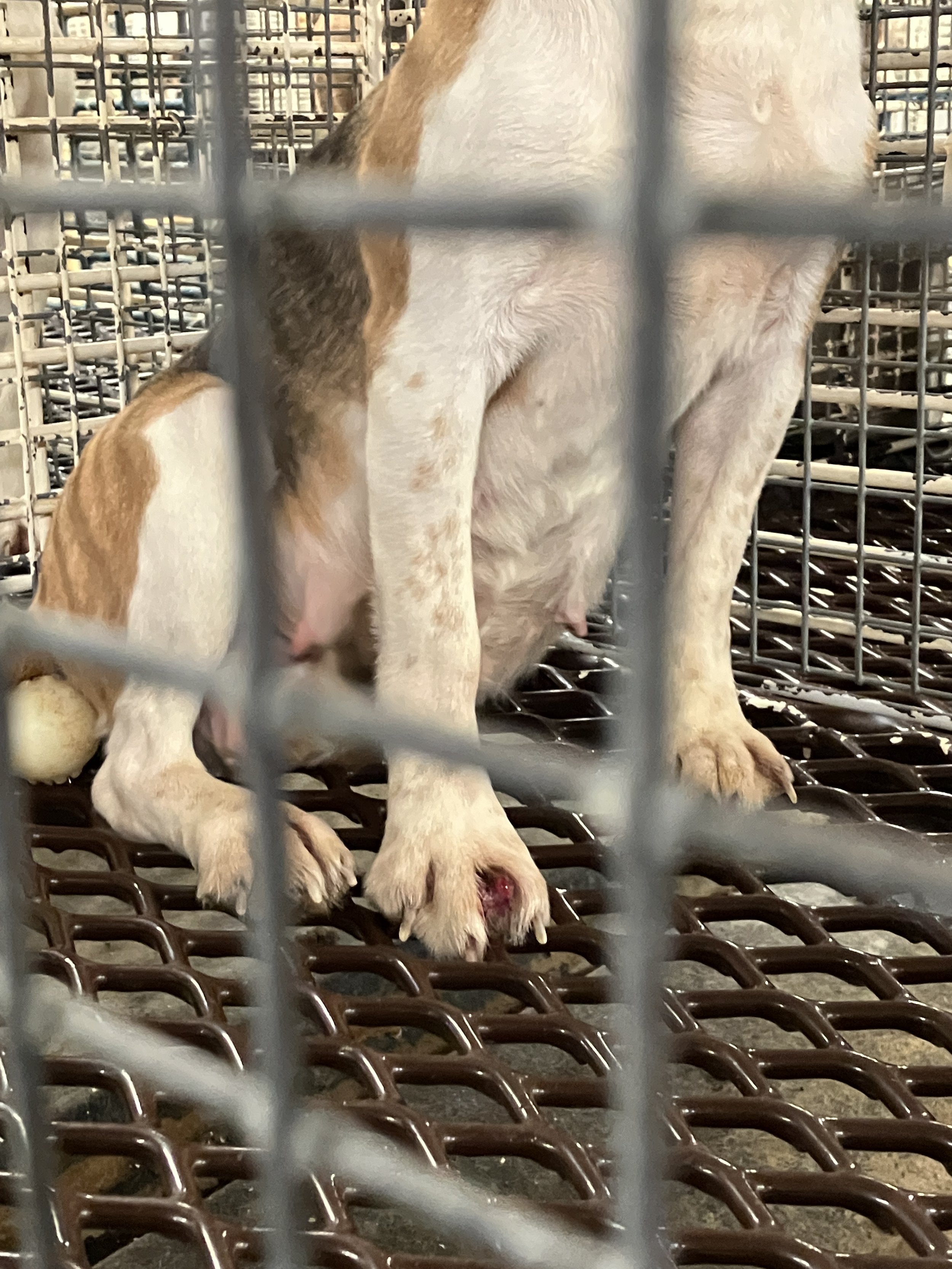Ridglan Farms
According to state and federal inspections, Ridglan Farms keeps thousands of dogs in stacked cages in windowless sheds, with no outdoor access – they literally never leave their cages. These dogs are bred repeatedly, and their puppies are sold to labs across the country for experimentation. The US Dept of Agriculture inspection reports 3,110 dogs at Ridglan Farms for breeding and 148 being experimented on, for a total of 3,258 dogs on site in Dec 2023. To put that in perspective, the Dane County Humane Society adopted out 1,241 dogs in 2023. The enormous scale of this puppy mill is almost impossible to comprehend. And it’s right in our backyard.
Under Investigation
Ridglan Farms is currently facing three separate investigations into different aspects of their operations.
Criminal Animal Cruelty
In March 2024, animal activist and lawyer Wayne Hsiung approached Dane4Dogs with a wild idea - let’s ask the court to appoint a Special Prosecutor to prosecute Ridglan Farms for animal cruelty. After all, Dane County District Attorney Ismael Ozanne had failed to prosecute, despite having been provided overwhelming evidence of animal cruelty over the course of many years. We decided to partner with another local activist organization, Alliance for Animals, and the Colorado-based Animal Activist Legal Defense Project. Our coalition submitted a petition to the court, and Dane County Judge Rhonda Lanford agreed to hear our evidence. In a six-hour hearing on Oct 23, 2024, witnesses testified to the animal cruelty that was routinely happening at Ridglan Farms. Two former employees bravely took the stand and recounted their observations and experiences. Wayne Hsiung testified to what he saw when he rescued three dogs from Ridglan in 2017. Expert witnesses testified about proper veterinary practices and the consequences of failing to provide adequate care to the dogs. And in January 2025, Judge Lanford approved our petition for a Special Prosecutor in a strongly worded 23 page decision. Shortly thereafter, she appointed LaCrosse District Attorney Tim Gruenke to investigate and decide whether to bring charges against Ridglan Farms.
Photo credit: Channel 3000
Veterinary Practices
In December 2024, Dane4Dogs, in collaboration with the Animal Activist Legal Defense Project, Alliance for Animals, and Wayne Hsiung, submitted a complaint about the veterinarians at Ridglan Farms to the Wisconsin Veterinary Examining Board. This complaint was based on the testimony of former employees and expert witnesses from the Oct 2024 hearing.
According to the Veterinary Examining Board (VEB) FAQ page,
A received complaint is reviewed by a VEB investigator who will follow-up with the complainant and credential holder. The investigator will contact other persons, as needed, to gather facts, potential evidence, and other information relevant to the complaint. VEB staff members do not have authority to judge or make decisions on complaints. The VEB investigation staff process complaints, investigate to gather facts and evidence, present the findings to the VEB screening committee, and assist disciplinary counsel and the case advisor with drafting the resolution and communications with the complainant and respondent.
The VEB screening committee is comprised of a subset of Veterinary Examining Board members. The screening committee meets monthly at meetings that are open to the public, and it reviews all complaints that fall under the jurisdiction of the VEB. The screening committee decides whether there is evidence of a violation of VEB rules and regulations and, if so, it opens the complaint for further investigation and potential disciplinary action against the credential holder, now titled “respondent.” If the screening committee does not believe there is evidence of a violation, the complainant and credential holder are notified after the screening committee meeting.
On Feb 19, 2025, the VEB Screening Committee opened our complaint for further investigation and potential disciplinary action.
Inspection Failures
“The ammonia / odor level in several locations was bad enough that I experienced nausea on one occasion, and my throat and nostrils were irritated for several hours after I left the facility.”
“In several buildings within the facility, the drainage systems are not constructed and/or operated so that animal waste is rapidly eliminated, contributing to odors observed by the inspection team. Low spots where waste accumulates and becomes stagnant were consistent in the catch pans beneath the second-level enclosures where adult dogs were kept. Drainage channels and the graded surfaces beneath the enclosures in the aforementioned areas had excess accumulation of excreta and other organic matter.”
“Most wall-mounted exhaust fans and their adjacent surfaces (louvers, fan blades, casing and ingress points) within the facility were coated with organic material, restricting air movement.”
“Approximately 30% of the enclosures with walls constructed of coated wire had some degree of rust or the wire coating was worn off.”
“I observed a dog within enclosure 550/551 identified preliminarily as ZKA-8 or FZA-8 that was limping and keeping weight off her front right paw, which had what appeared to be a ruptured interdigital cyst. No documentation of the cyst was present on the information cards located outside of the enclosure(s) or the dry erase board(s) utilized to document interdigital cysts.”
“I observed a dog identified as FVC-0 / inside enclosure 737/739 that was limping while moving through the enclosure, not bearing any weight on the right front leg. Two partially healed scratches and/or puncture wounds and swelling were present on the leg near the carpal joint. No documentation of the injury was present on the enclosure card or the whiteboard documenting ongoing or necessary treatment(s).”
“The second dog present in the same enclosure (FJA-9) appeared to have partially healed puncture / scratch marks on the snout.”
“Within several enclosures the feet and legs of puppies were found to be repeatedly passing through the floor openings (see pictures 3-4). In these instances the legs of puppies were observed to have passed completely below the mesh flooring up to the puppy’s chest. Puppies were observed to have noticeable difficulty standing or moving comfortably and naturally upon the floored surface due to the large size of the openings.”
“Some of the weaned puppies and preweaning-aged puppies in eleven enclosures were observed to have feet or legs pass through the smooth-coated mesh floors when they walked.”













